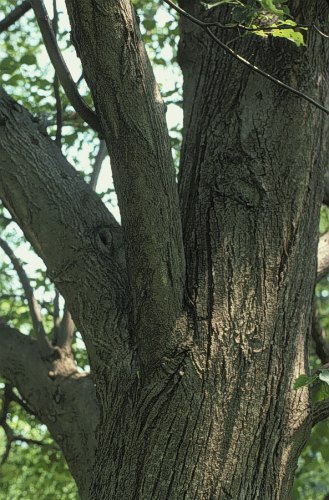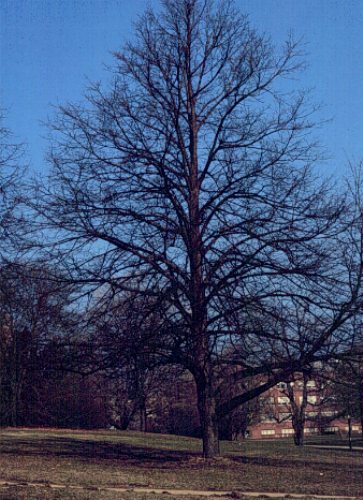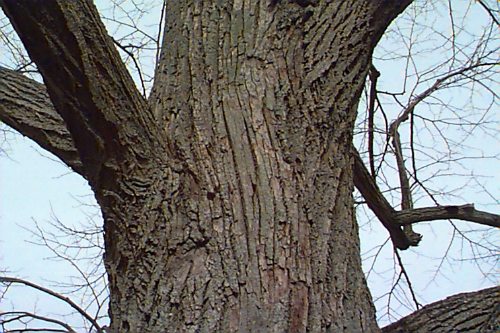Tilia x euchlora
Crimean Linden, Caucasian Linden
Tiliaceae
ExpandHabitat
- a hybrid developed in the 19th century, parentage is undecided; it is believed to be T. cordata and T. clasystyia
- hardy to zone 3
Habit and Form
- a deciduous medium to large tree
- 40 to 60' tall
- 20' to 30' wide
- branches to the ground
- medium texture
- moderate growth rate
Summer Foliage
- deciduous, simple leaves
- alternate leaf arrangement
- broad ovate leaf shape
- cordate leaf base
- 2" to 4" long
- fine sharp serrations cover margins
- dark green leaf color
Autumn Foliage
- yellow or yellow-green at best
- not showy
Flowers
- yellowish white flowers in cymes of 3 to 7 flowers
- 2" to 4" long
- blooms in July
- floral bract present linear, 2" to 3" long and green
Fruit
- small round nutlet 0.2' to 0.3" in diameter
- brown color and pointed
- pubescent
- slightly ornamental in late summer
Bark
- glabrous slender stems
- reddish upperside
- yellow underside
- older bark is gray-brown in color
Culture
- full sun to light shade
- easily transplanted
- prefers moist, deep, fertile, well-drained soils
- tolerant of difficult growing sites and soils
- urban tolerant
- pollution tolerant
- very pH adaptable
- tolerates hedging well
- suckers below graft
Landscape Uses
- shade tree
- lawn tree
- street tree
- urban locations
- planter boxes
- as a large hedge
- city malls and plantings
- for formal habit, regularity and symmetry
Liabilities
- attracts bees when in bloom
- Japanese beetles
- sooty mold
ID Features
- glabrous, 0.25" long, yellowish-red buds
- branches to ground
- cordate leaf shape
Propagation
- by cuttings
- by grafting
Cultivars/Varieties
'Laurelhurst' - This selection is notable for its symmetrical branching structure about a straight trunk. The plant grows densely, with a broad-pyramidal crown of lustrous, deep green foliage.





